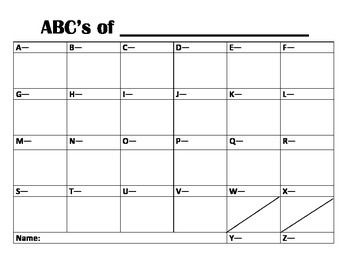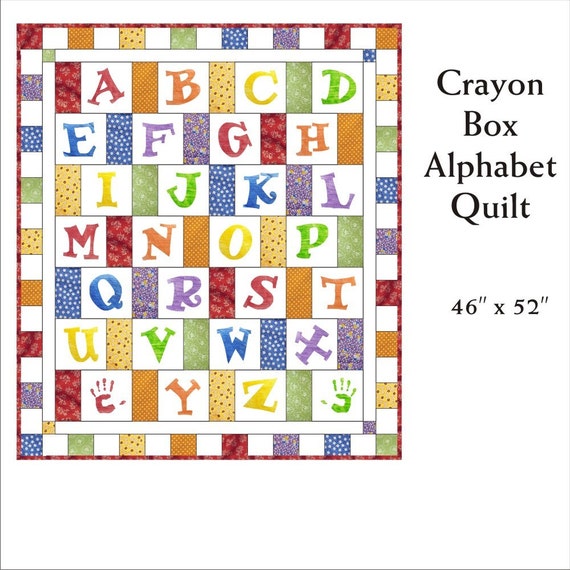
Abc box template series#
Applying the A-B-C structure broke these narratives down into a series of events defined by triggers, actions and consequences.īijou emphasised the importance of doing this over multiple timepoints, and recording behaviours without inferring any emotional significance. Previous behaviourists often described observations as a running narrative of events without any separation. The ABC method was first described by the applied behavioural scientist Sidney Bijou in a 1968 research paper (though note that the terms ‘ABC analysis’ or ‘ABC chart’ and the like, were coined later).Īt the time, this paper was revolutionary in influencing the way behaviour was recorded. How ABC charts developedĪBC charts arose from a need for better methods for recording direct behaviour observations. Modern iterations and extensions of ABA include the development of the functional assessments, function-based intervention and implementation of positive behavioural support (PBS) systems that we know today. There are even whole books dedicated to using ABA for behaviour management within general school classrooms. For example, giving a child coloured cards to obtain attention from a teacher instead of standing up and shouting out.Īlthough closely linked to autism intervention, ABA principles form the basis of behaviour management strategies in a wide range of settings from home to healthcare. It also aims to replace challenging behaviours with those of a more socially accepted function. ABA attempts to reduce the occurrence of challenging behaviour by understanding this function, then changing the antecedents, consequences, or both. ABA subscribes to the general modern view that all behaviour has a purpose o r function.

This concept underpins the field of applied behaviour analysis (ABA) which originated in the 1950s. It makes the crucial link between the behaviour itself (which occurs due to a trigger/antecedent) and the consequences after the behaviour occurred. Operant conditioning is the theory that learnt behaviours can be encouraged by positive reinforcement, or discouraged through withholding positive reinforcement or applying punishment. Skinner (1904-1990) described this as the ‘three-term contingency’ of operant conditioning. History and Context of the ABC model Fundamental theoryīreaking down behaviour into antecedents, behaviours and consequences has its roots deep within behavioural psychology of the 20 th century. This allows more meaningful interventions rather than just trying to prevent the behaviour itself. Thinking of behaviour in these terms helps to understand why a child is behaving in a particular manner.

Consequences (C): what happened directly after the behaviour occurred.Behaviour (B): the specific action(s) or behaviour of interest.Antecedents (A): what happened directly before the behaviour occurred.It does this by breaking down your observations into three elements: What is the Antecedent Behaviour Consequence (A-B-C) model?Ī-B-C or ABC recording is a way of collecting information to help determine the function of a child’s behaviour. We provide a handy downloadable chart which you can print off and use as part of your strategy. In this article, we will outline the ABC recording method, and how using it might help you analyse the behaviour of children you work with. This will help you develop an effective approach. Although there are many strategies out there to help manage behaviour, occasionally you will need to gather information and evidence to help you understand the context of behaviour in relation to the student’s environment. One of these is managing challenging behaviour. The Rapidesign ABC Architectural Template is a durable and flexible drawing template with its 0.030-inch thick translucent green color plastic material.Although a career working with children can be fun and rewarding, it is not without challenges. It offers ¼ inch = 1 foot, 1/8 inch = 1 foot, and ½ inch = 1 foot scales. Available in three different scales, it accommodates a wide range of drawing applications. It comes with a 16-inch spacing in four-inch modules.

This architectural drawing template features a floor elevation indicator and a roof pitch index. For additional functionality, it is equipped with ANSI symbols. It also includes kitchen and lavatory fixtures such as shelves, cupboards, counter top, refrigerator, bath tub, and many others. It contains cut-outs of circles and door swings in different sizes. The Rapidesign ABC Architectural Template is a functional house plan fixtures drawing template designed for architects, builders, and contractors.

Overview for Rapidesign 22R ABC Architectural Template


 0 kommentar(er)
0 kommentar(er)
